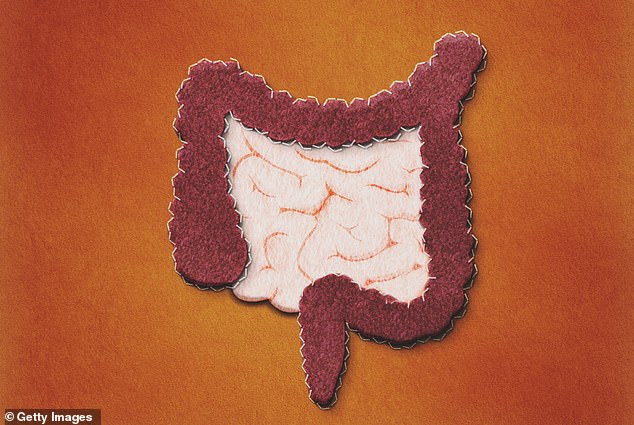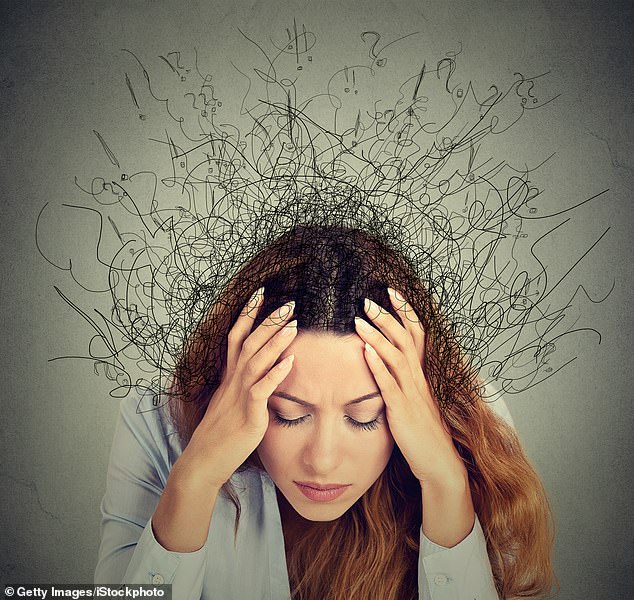Scientists have discovered that social anxiety lives in a person’s gut, which could lead to new treatments affecting 15 million American adults.
Researchers at University College Cork in Ireland transplanted gut microbes from a human with the disorder into mice, which showed social phobic behaviors 10 days after implantation.
The team found that the animals also had reduced levels of the hormone corticosterone, which is involved in energy regulation, immune reactions and stress responses.
The findings, according to the researchers, have suggested that “the microbiota-gut-brain axis is an ideal target to identify new therapies aimed at improving symptoms” to improve social anxiety in humans.

Social anxiety, depression and other conditions are linked to the gut microbiome in ways scientists are just beginning to unravel
These results add to a growing body of research showing a complex link between the intestinal tract and the brain, suggesting that anxiety, depression, autism and other brain conditions could be treated, at least in part, by addressing problems that begin in the intestine.
Importantly, immune system markers indicated that the mice had altered immune systems after transplantation, suggesting that this so-called “gut-brain axis” involves inflammatory molecules that can travel from the gut to the brain.
This study was an outgrowth of an existing research experiment that scientists were doing with people.
The gut microbe samples came from people who had volunteered for a study investigating the relationship between gut microbes and social anxiety in people.
So while they had the samples, they tried something strange.
The scientists behind the study started with 12 microbiome samples (fecal samples) from six people with a formal diagnosis of social anxiety disorder (SAD) and six people without social anxiety.
Before they could be included in the study, all participants had to confirm that they were not taking any psychiatric medications or nutritional supplements that could affect their microbiome.
Mice were prepared for the study by feeding them a mixture of four different antibiotics for a week, “to deplete the resident microbiota.”
In other words, they were given a clean slate.
Each participant’s poop donation was then split six ways and implanted into six different mice, for a total of 72 mice: 36 received transplants from people with SAD and 36 received transplants from people without SAD.
The scientists implanted the new microbiome into the gut of each mouse via a feeding tube for three days straight, to ensure the new microbiome became established.


The intestine is connected to the brain through the vagus nerve. Scientists suspect that some people with intractable depression or anxiety may respond to treatments that target their microbiome rather than their brain.
Ten days after starting treatment, the mice were subjected to a series of tests to examine a variety of functions including sociability, general anxiety, bowel function, depression and fear.
In most tests, the two groups of mice performed similarly.
But there was one test in which the group that had received the transplant from people with SAD performed significantly worse: a test of social fear.
In this experiment, scientists induced fear in mice, fear triggered by social cues, and then measured how long it takes to disappear.
Although the SAD group’s social fear took much longer to decrease, there was no difference in sociability between the two groups.
So the researchers concluded that what they were looking at was the mouse version of social anxiety.
Also in people, social anxiety can be present even when a person has the desire to be sociable. That’s what can make the condition so distressing.


Inflammatory molecules can pass between the gut and the brain, so scientists suspect that the immune system plays a role in the so-called gut-brain axis.
Testing of the mice’s microbiomes found them to be significantly different between the two groups, confirming that the two groups of people (those with and without SAD) had significantly different gut microbes.
These mice otherwise remained healthy, but in addition to their newfound social anxiety, they also showed some unique changes in their brains.
Specifically, the region of the brain called the bed nucleus of the stria terminalis had reduced levels of the so-called “love hormone” oxytocin, which is important for bonding between parents and children, as well as between individuals in social and romantic settings. .
This brain region is important for anxiety and stress responses, and mice with SAD transplants showed severe changes.
Furthermore, the medial amygdala and prefrontal cortex had reduced expression of oxytocin-related genes in the SAD transplanted mice. These brain areas are involved in fear and personality, respectively.
Clearly, changes to their microbiomes had triggered some significant differences in behavior.
It’s not entirely clear how one change led to the other, but scientists suspect it has to do with the immune system: Markers of inflammation increased in the SAD-transplanted mice, and these markers may cross the blood-brain barrier.
He study was published in the magazine proceedings of the National Academy of Sciences.
While the study did not identify a treatment, it opened the door to developing one in the future.
“This suggests that the microbiota may play a causal role in increasing social fear responses in this disorder,” the study authors wrote.
“In the future, the microbiota-gut-brain axis is an ideal target to identify new therapies that improve SAD symptoms.”
